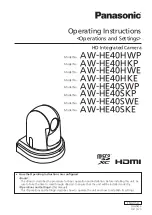
Taking Photographs—Flash Photography
96
Red-eye reduction
with slow sync
Combines red-eye reduction with slow sync. This mode is only
available in auto multi program and aperture-priority auto expo-
sure modes. Use of a tripod is recommended to prevent blur-
ring caused by camera shake.
Rear-curtain sync
Slow rear-curtain sync
In shutter-priority auto or manual exposure mode, the flash fires
just before the shutter closes, creating the effect of a stream of
light behind moving objects. In auto multi program and aper-
ture-priority auto, slow rear-curtain sync is used to capture both
subject and background. Use of a tripod is recommended to
prevent blurring caused by camera shake.
Slow sync
Flash is combined with speeds as slow as 30 s to capture both
subject and background at night or under dim light. This mode
is only available in auto multi program and aperture-priority auto
exposure modes. Use of a tripod is recommended to prevent
blurring caused by camera shake.
Flash sync mode
Flash control
Flash Sync Modes
The D100 supports the following flash sync modes:
This mode is recommended for most situations. In auto multi
program and aperture-priority auto modes, shutter speed will
automatically be set to values between
1
/
60
s and
1
/
180
s.
Front-curtain sync
Red-eye reduction
AF-assist illuminator lights for approximately one second before
main flash fires, causing pupils in subject’s eyes to contract and
reducing the “red-eye” effect a flash can sometimes cause. Best
when subject is well within range of flash and fully facing cam-
era. Because shutter is not released until about one second
after shutter-release button is pressed all the way down, this
mode is not recommended for subjects that are moving errati-
cally or on other occasions when you want the camera to re-
spond quickly to shutter-release button. After pressing shutter-
release button, do not move camera until photo has been taken.
















































